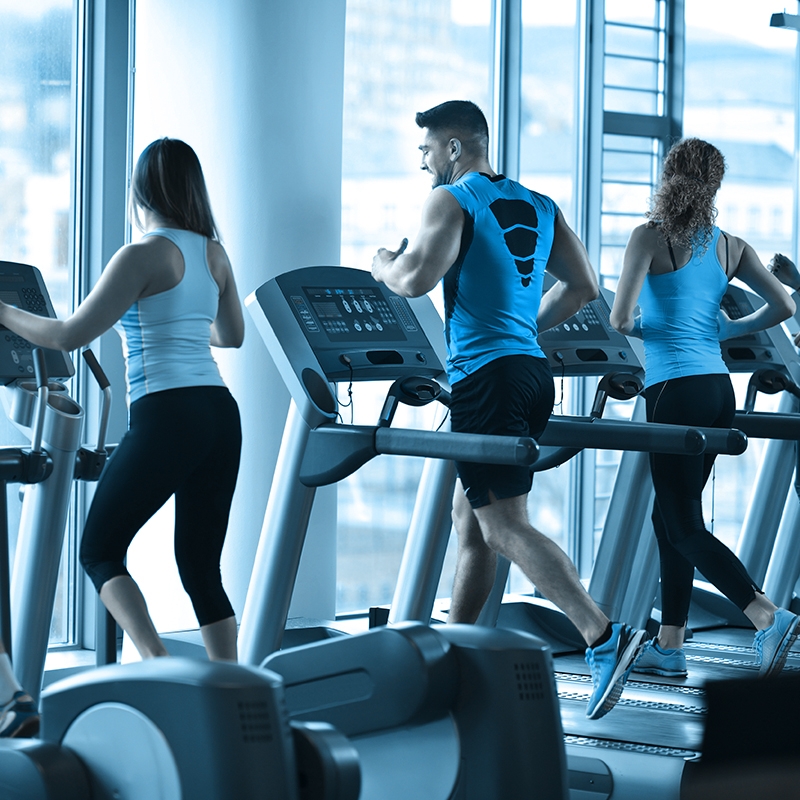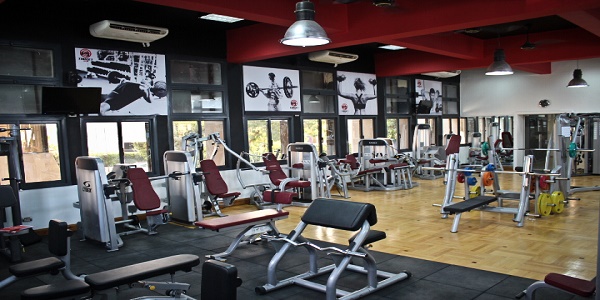How Exercise Helps Fight Stress, Anxiety, and Mental Illnesses
Note: If you are viewing exercise videos on a mobile device, please switch to horizontal view for the best experience.
Jennifer Carter, Ph.D., a sports and counseling psychologist at the Ohio Center for Balanced Living, suggested that in rehab for men, walking through a therapy session is the best way for the patients to calm down and open up.
That’s not the only benefit, however. Carter further explained that strolling through the therapy session also brings numerous mental health benefits to psychotherapy patients.
Unfortunately, though, psychology graduate training programs seldom teach their students how to utilize exercise to change a patient’s behavior. Carter strongly believes that counseling and clinical psychologists could improve the results of their patients once they incorporate exercise into the treatment process.
Professor Michael Otto, Ph.D. of the Boston University agrees as he said that there is less awareness of the positive effects of exercise on mental wellness.
The good thing is there are numerous researches that are currently working out the details on how much exercise benefits mental health. Among the topics being studied are how much exercise is needed, what kinds of boost does exercise give, and why is it very difficult to jog in the morning. Notwithstanding these efforts to build the connection between exercise and mental health, one cannot ignore the hard evidence that is already there.
Exercise as an instant mood enhancer
If you have tried to run after a very stressful day, most probably you have experienced how fast moderate exercise can alter your mood. According to Professor Otto, “five minutes after the exercise you’ll feel the mood-enhancement effect.”
That’s not the only effect though. Research involving rehab for men shows that moderate exercise can also help improve the condition of patients suffering from long-term depression.
The evidence to prove the connection between exercise and long-term depression actually came from population-based correlation studies conducted abroad.
According to the data gathered for these studies, active people are less depressed compared to inactive ones. Adversely though, results of the same study revealed that people who were originally active but stopped their physical activities tend to be depressed compared to those who stuck with the active lifestyle.
A clinical psychologist from the Duke University, Dr. James Blumenthal, Ph.D., explored the mood-exercise connection through a sequence of controlled randomized trial experiments.
In one of their studies, he and his co-author classified and grouped adults with sedentary lifestyles who have depressive disorders into four groups: home-based physical activities, monitored exercise, on placebo, and on antidepressant therapy.
Within a 4-month period of treatment, they found that patients who are in the exercise and antidepressant therapy had higher remission rates compared to those in placebo. In this case, he concluded that exercise has generally comparable effects with antidepressants when administered to patients with a major depressive disorder.
After a year, the same patients were followed-up and they found out that patient respondents who reported regular exercise within the one-year span had lower depression scores compared to the less active respondents. They then concluded that exercise does not only play an important role in treating depression, but it also prevents relapse.
The Fight-or-flight response
Another area being explored by researchers involving rehab for men is how exercise is being utilized as a tool to prevent and treat anxiety.
When we feel any kind of threat from the external environment, our nervous system automatically sets into motion a series of interrelated reaction — sweating, nausea, and palpitations. These reactions are accompanied by fear if experienced by people who have increased sensitivity to anxiety. Aside from reacting with fear, these people are also more prone to develop panic anxiety disorder, said Dr. Jasper Smits, who co-authored the publication “Exercise for Mood and Anxiety: Proven Strategies for Overcoming Depression and Enhancing Well-being.”
Dr. Smits said that regular physical activities might actually help people who have anxiety-issues to panic less when confronted with fight-or-flight sensations. Also, according to Smits, the body produces a similar reaction when exercising and when confronted with a fight-or-flight situation—sweating and increased heart rate.
This theory was tried and tested among 60 volunteer respondents who were recorded to have increased sensitivity to anxiety. These volunteers participated in a 2-week exercise program and after the same, they showed great improvements in anxiety sensitivity compared to another set of respondents (controlled group).
Moving your Muscles
It is still not very clear how moving your muscles can have a good effect on one’s mental health. There are numerous things that can influence one’s mood.
Some research assumes that exercise improves the condition of a chronic depressive individual by increasing one’s brain-derived neurotrophic factor or by increasing the serotonin level. Another theory argues that exercise improves the quality of sleep of an individual, thus improving the protective effects of the brain.
Other explanations include exercise boosting the depressed individual’s overall outlook in life and help him create a sense of accomplishment, thus, helping him come back to his meaningful routines.
Let’s also not forget the theory that states that an individual’s responsiveness to anxiety and tough situations are being moderated by physical activity. In this case, it can be said that physical activities are toughening the brain so that stress may have little impact on it.
Reaping the benefits
Of all that has been discussed above, we come to the most difficult question: “If exercise provides all these benefits, why is it so difficult to bring ourselves to do it?”
In a study conducted by the Centers for Disease Control and Prevention, almost 30% of the US population has zero physical activity.
Pushing oneself too much in starting a new exercise regimen may be one of the reasons why people loathe exercise. When an individual overexerts himself and pursues physical activities which are above their respiratory thresholds, that’s the time they put off exercise’s mood boost. Given these, it is best recommended to start slowly and not to overexert oneself with strenuous physical activities.
Another reason why we have apathy towards physical activities is that we put too much premium on exercising as a means to lose weight, prevent diabetes, or to lower cholesterol. Unfortunately, it will take one whole month before we can see the results of your dedicated physical activities. This is a recipe for failure, said Dr. Otto.
Though exercise has been rarely advertised as a means to achieve peace, balance, and a clearer mind. The workout mood improvement, on the other hand, gives near to instant gratification. Psychotherapists would do fine in advising and encouraging their patients to tune into their own psychological states after a workout, most especially when they’re feeling emotionally down.
Final Word
Mindfulness while doing physical activities can greatly decrease an individual’s stress level and improve greatly your mental health.
If you can’t exercise or engage in physical activities because money is a big consideration, you can always explore affordable or free options like exercising in local community centers or parks. If you have private insurance, you can get allocation for fitness center memberships as a part of your mental health care plan.
Also, you might find it difficult to stick to your motivation while exercising. When confronted with this situation, it is best to think of ways to incorporate exercise into your lifestyle and daily routines. It is also fun to choose something that you enjoy doing. You can even ask friends or families to help you keep your motivation on track.
Mix exercise with a healthy and balanced diet to improve your motivation and energy level for physical activities.

